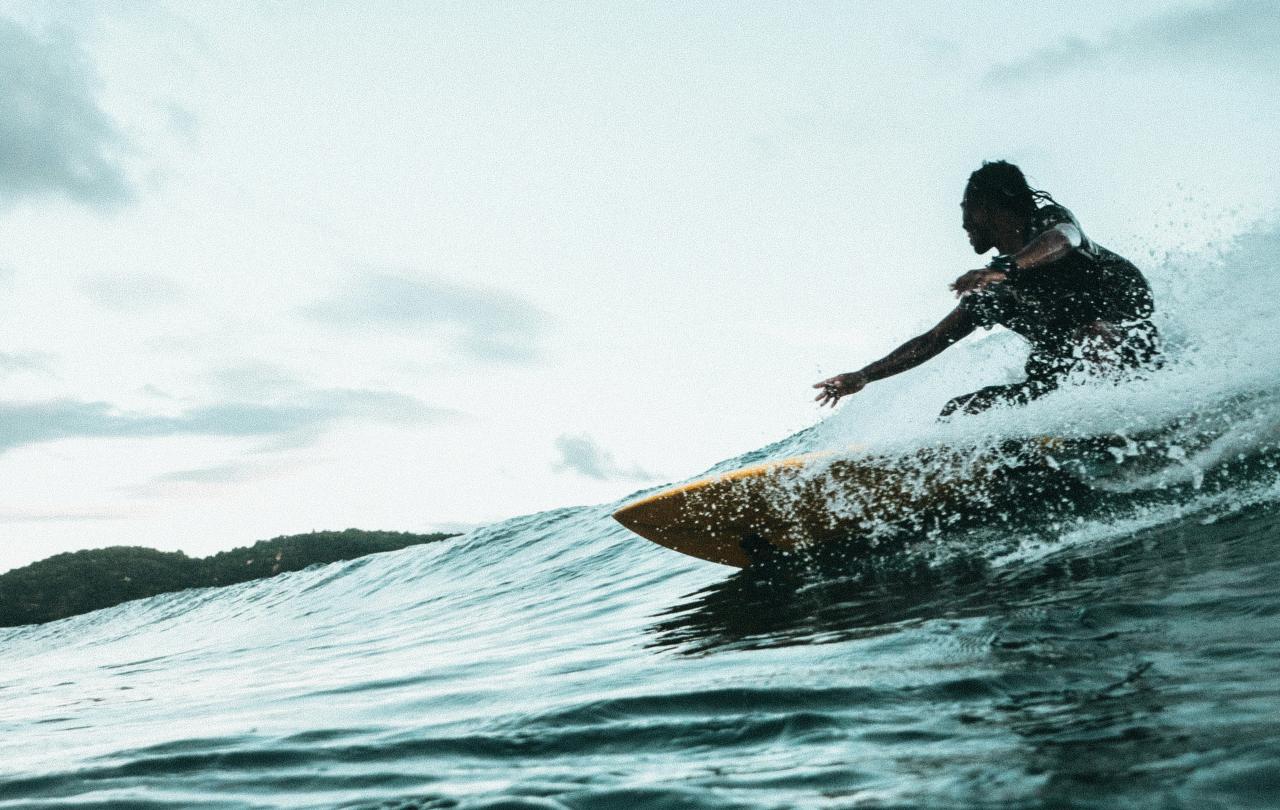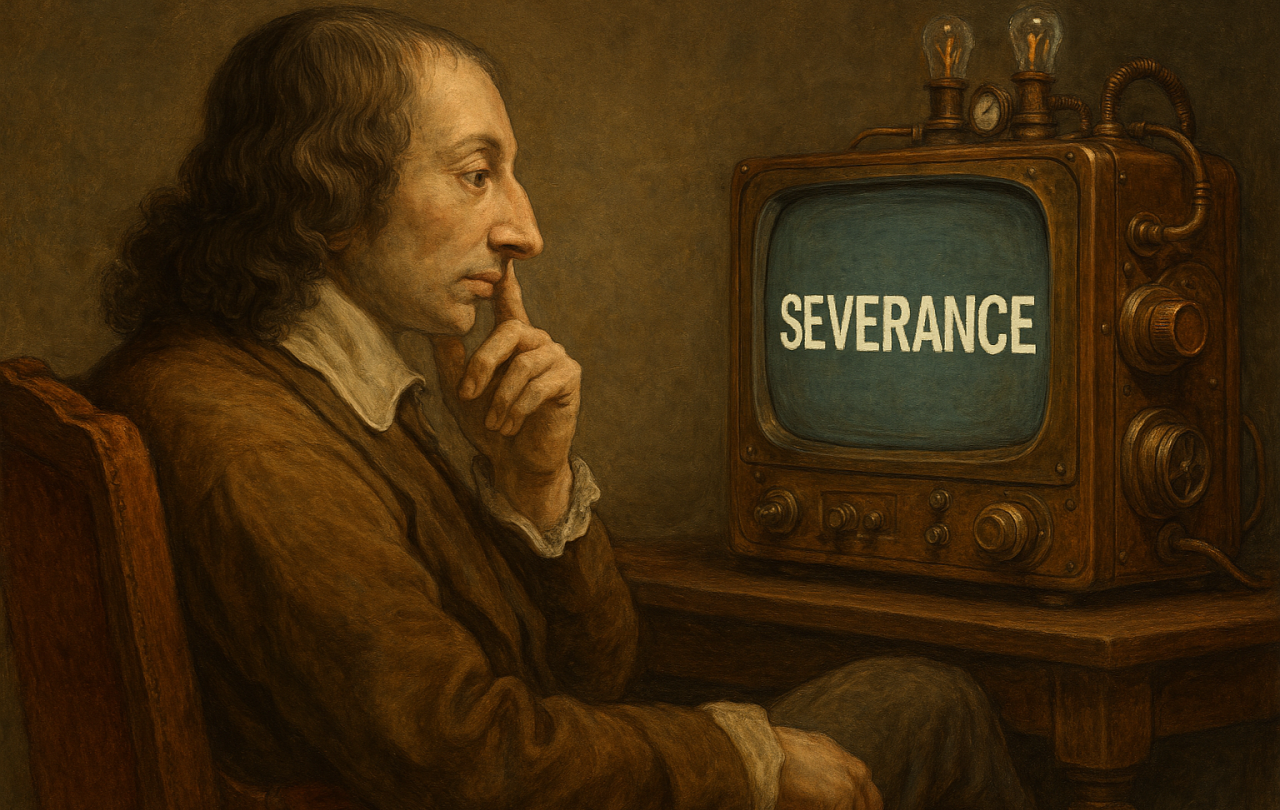
Fyodor Dostoevsky wrote in The Brothers Karamazov, “The mystery of human existence lies not in just staying alive, but in finding something to live for.” For many, the true purpose of life is not merely a philosophical concept, but a fundamental inquiry. It's about uncovering something beyond our individual selves, an answer to the inherent question about the very meaning of our existence.
The place where I find myself pondering this mystery is on my surfboard. Whether anticipating a wave or carving along its emerging curl, the ocean consistently beckons me to meditate on a quest for a re-enchantment of our profound spiritual mystery.
I have loved surfing since I was young. I remember the first wave I really surfed in Southern California. I was 14 and an insecure high school kid who struggled with a severe stutter. It was so bad that I viewed everything in my life through the lens of my stutter. Consequently, I always wanted to hide in the shadows and never be seen, because any time I opened my mouth to speak it was a mess. But something happened for me that day that forever changed how I saw myself. On that wave, I saw my potential, my person, not just my stutter.
That morning the water was alive with a crazy energy churning just below the belly of my board. The waves were rolling in as beautiful lines etched against the morning sky. They stacked up on the outside reef and I picked my ride. I put my hands deep in the cold, blue waters and my heart began to race as I pulled and paddled toward the unknown. The wave that I chose rose to a perfect liquid wall. It was sheer beauty.
At that moment, it was just me and that wave. I realized I didn’t have to talk to anyone or worry about what others thought of me. Instead, I felt alive and free to be me. In this freedom, I could feel the exhilaration of pulling and paddling toward the horizon full of fear and excitement. I was caught up in the rush of the unknown size, shape and personality of the wave and what I would do once I caught it.
In a split second, I pivoted 180 degrees, perfectly positioned my body on the board, put my hands deep into the rising pitch, pulled in, and snapped up to my stance all in a single movement.
As I dropped in, my insecurities, my doubts, my fears …. my stutter vanished like the mist spraying off the curling wave. In that instant, I felt a connection to something beyond me as I found my line and carved up and down the face of the wave. I was forever hooked like an artist sculpting beauty out of a block of stone. On that wave I saw myself in a new and different light of potential. I converged with the board, the moment, with what needed to be done, and looked for what could be done. I found something more, something beyond me. "The experience of art is a cleansing of the spirit, a return to deeper emotional and imaginative states,” as Pablo Picasso put it.
You might say it’s weird but surfers have a deep sense of trust in the experience of surfing; the wave draws things out of us that we couldn’t see on our own. It inspires us to push our limits until we see and realize our potential, until we see something more.
Surfer Easkey Britton is the first Irish woman to be nominated for the Global WSL Big Wave Awards. She is a scientist, academic and social activist, with a PhD in Environment and Society and she is always one to look in places others aren’t for the answers to difficult questions. She said,
“A wave is like a mirror to our soul. Whether we paddle out and into the horizon, take a drop down the face of a liquid wall, or dive deep under a mountain of water as it crashes overhead, the wave reflects our fears, our willingness, our vision, our potential.”
Are we willing to look at ourselves in the mirror? Or better yet are we willing to venture out into the wild and let something else bigger than us show us … us?
I am not saying that wave gave me something to live for, but it did show me I was something more than my insecurity, my shortcoming, my limited view of who I was and what I perceived I could be. It revealed something outside of and beyond me. It acted much like that mirror Easkey talked about, and it revealed that I hid behind a cover, a disguise, a fear. In a melodic almost musical repose, it crashed on the shores of my perception and gently but powerfully rattled my forming identity and revealed something more.
Dostevesky speaks not of a moment but of a journey to find something, to find that thing that moves your soul, that stirs your being into that sense where we ponder “something to live for.” Surfing did that for me.
For the surfer the reward is the journey of the never ending search for the next wave. It’s not about just one wave, just one drop. It’s the whole experience of the journey, wave after wave; it’s the sensation of the ride and the work that gets us there. It’s where we find a sense of significance, a sense of something greater. As Henri Matisse put it, "Creativity takes courage.”
I remember when I was studying at Oxford University, I longed for the noise of the calming surf. Instead, all I could hear was the occasional buzz of traffic outside and the silent enchantment of academia whispering in the quiet, cold, majestic city parks. Yet like the ocean it too in its own way was quietly calling me to find that “something to live for.”
Surely now in a world of powerful currents and unsuspecting waves, we need more than ever to find something to live for—something beyond ourselves. This era of rapid technological advancement, instability, division, and volatility underscores a heightened need for deeper discussions about meaning, hope, purpose, and what truly gives life value. Like a surfer paddling out toward the horizon, dropping in on a wave, and finding her line, we need to never give up the search for the immeasurable and fascinate our soul with this journey. For the surfer there is a great, almost deep joy in finding that ethereal line stretched out in the emerging pitch.
The wave, though external, compels us to look beyond our individual selves. It pushes us to experience something vast, transcending the confines of our self-centeredness and exposing us to a world—and potentially a hope—far grander than our limited perception.
As I carve up and down the face of the wave like that sculptor, I continually deepen myself into this essence of something greater, something bigger than me. I am ever drawn to its soulful re-enchantment as it gently but powerfully confronts me with the microcosm of my ‘me-ism’, with the truth that I was created to live for something and perhaps even for Someone vastly bigger than myself.
Support Seen & Unseen
Since Spring 2023, our readers have enjoyed over 1,500 articles. All for free.
This is made possible through the generosity of our amazing community of supporters.
If you enjoy Seen & Unseen, would you consider making a gift towards our work?
Do so by joining Behind The Seen. Alongside other benefits, you’ll receive an extra fortnightly email from me sharing my reading and reflections on the ideas that are shaping our times.
Graham Tomlin
Editor-in-Chief





